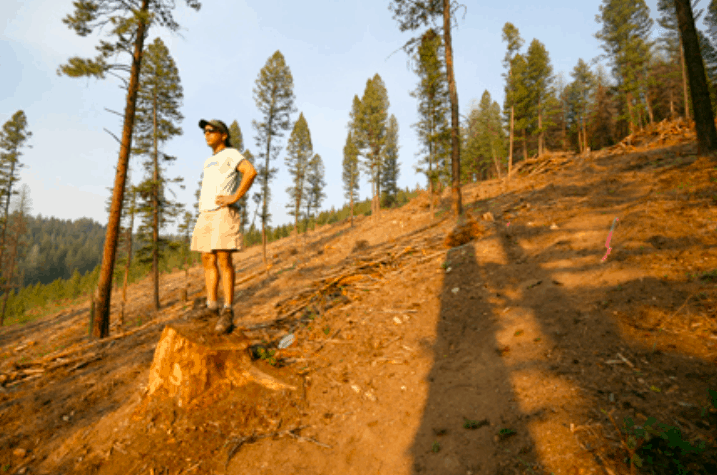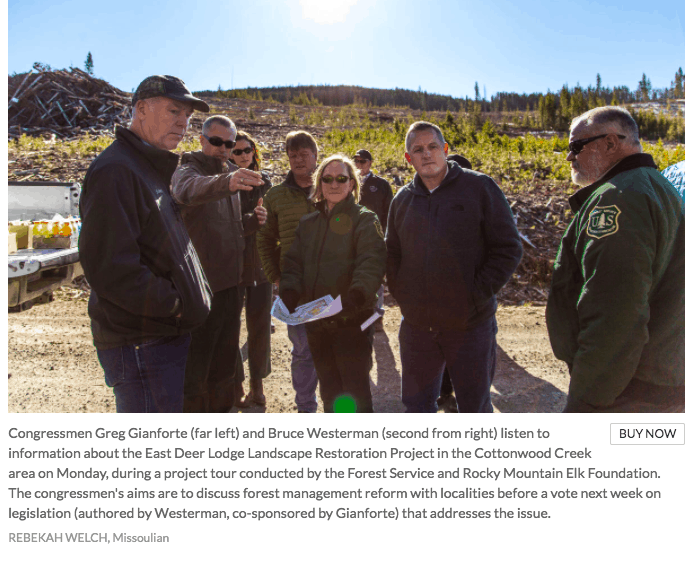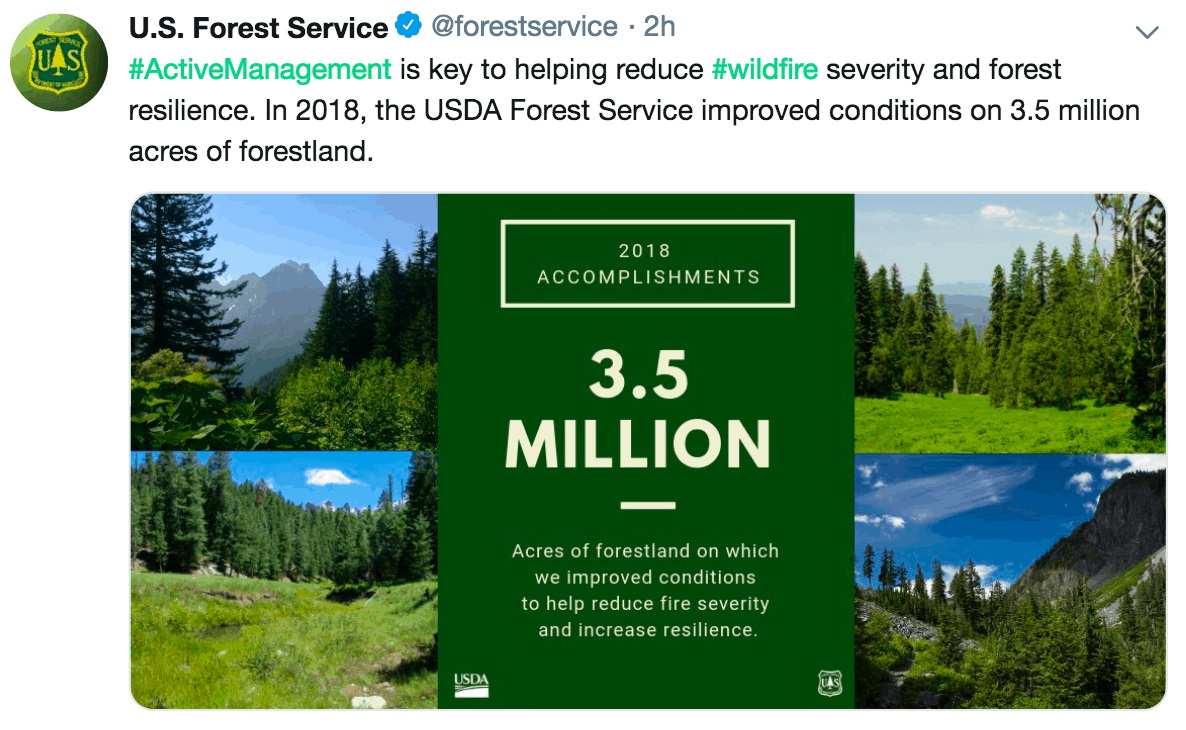Last week on this blog, a post focused on comments members of the public left on the Sierra Club’s Facebook page regarding the issue of logging and management of the Giant Sequoia National Monument. The basic ‘gist’ of the post was that the Sierra Club wasn’t being truthful in their advertising. If you look at the comments to the post (which listed 30+ comments that were on the Sierra Club’s FB page) from Jon Haber, I do believe that Jon provided some pretty good evidence and legal history documenting past threats and also explaining how future threats are certainly not out of the question.
So, let’s take a look at the official Twitter account of the U.S. Forest Service. Today, they posted this collage of photos above with the text “Active management is key to helping reduce wildfire severity and forest resilience. In 2018, the USDA Forest Service improved conditions on 3.5 million acres of forestland.”
Does anyone spot any evidence what-so-ever in any of the four photos of anything that comes even remotely close to indicating that any of these areas saw any “active management” in 2018, or even within the past decade?
When I look at the four photos, what I see are some fairly pristine areas, which appear to look much more like a Wilderness area, or a roadless area, or an unlogged native forest than anything that comes close to resembling “active management” to “reduce wildfire severity.”
In fact, the forest-type presented in each of the four photographs all appear to be more like a mid- to upper-elevation mixed conifer or spruce-fir forest type. Ironically, if a wildfire would start burning in the forest-types and ecosystems presented in each of these four photos, the wildfire would naturally and normally very likely burn at mid- to high-severity – the very type of fire that some politicians catastrophic.
It goes without saying that I think it’s pretty darn dishonest for the U.S. Forest Service to be officially using these four photos to promote “active management” (which often times means logging and “thinning”). The other thing I found sort of interesting is the claim that in just 2018 the U.S. Forest Service accomplished 3.5 million acres of some type activity that supposedly will “reduce fire severity and increase resilience.” That accomplishment in just one year on nearly 5,500 square miles of U.S. Forest Service land is a far-cry from the rhetoric we hear from many right-leaning politicians, who claim the USFS can’t do anything because of “environmental terrorist groups” and “environmental extremists.”
P.S. Here are a couple of photographs showing actually U.S. Forest Service projects, which had a stated goal of reducing fire severity and increasing resilience. Guess these photos just would not have been as pretty to use in the Forest Service’s PR efforts.








